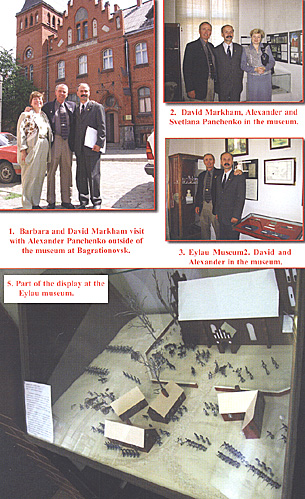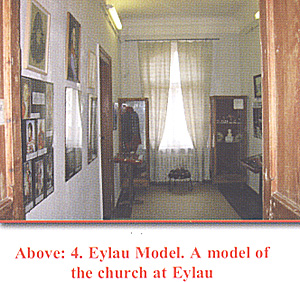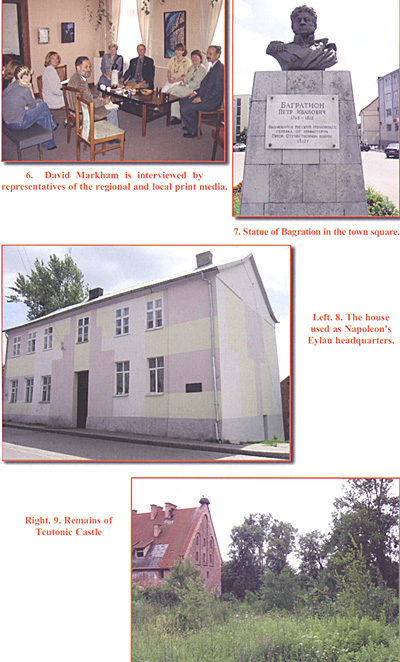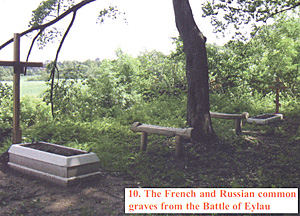Monuments at Eylau and Friedland
Battlefield Visit: Eylau
by J. David Markham, USA
| |
To Napoleonic historians, one of the best things about the end of the Cold War is the chance to visit some of the Napoleonic sites in the former Soviet Union and the Warsaw Pact nations. My wife Barbara and I have had the pleasure of visiting Borodino twice, and in the summer of 2003 we visited numerous sites in Poland and that isolated portion of Russia known as Kaliningrad.
This region is cut off from the main part of Russia and has not fully shared the economic improvements or tourism found in Moscow. Most of the tourists to the Napoleonic battlefields of Eylau and Friedland are German or Polish, but visits by English-speaking tourists are increasing.
The best way to get there is by air or, from Poland, hydrofoil to Kaliningrad, once known as the Prussian city of Königsberg. From there you can take a car to Eylau, now known as Bargationovsk. I recommend arranging for a car, driver and translator, as English is not universally understood and driving in the region can be difficult.
Once there, the first order of business is to visit the Museum of Local History, which has a nice exhibition of the Napoleonic period. While there, be sure to visit with Svetlana Panchenko, the Executive Director, and Alexander Panchenko, her husband and Curator. (see photos 1-5).
1. Barbara and David Markham visit with Alexander Panchenko outside of the museum at Bagrationovsk.
6. David Markham is interviewed by representatives of the regional and local print media.
As we drove through town, it was impossible to miss the large statue to Bagration that dominates the town square. (photo 7) Nearby was the house used as Napoleon’s headquarters 7-17 February, 1807.
7. Statue of Bagration in the town square.
On the outskirts of town is the remains of an old Teutonic Castle (photo 9) where portions of the battle took place. Not far from there are the monuments to the French and Russian dead, differentiated only by the western and Eastern Orthodox crosses. (photo 10)
One of the most memorable of the physical features of the battle was, and is, the church where Napoleon was nearly captured. It survives today mainly because it was converted into a factory that made refrigerators and other such appliances. The bishop’s home next to the church is much as it was in 1807. (photos 11 and 12)
Outside of town is the 19th century official monument, with captions in German. (photos 13 and 14)
Monuments at Eylau and Friedland Battlefield Visits
|

 5. Part of the display at the Eylau museum.
5. Part of the display at the Eylau museum.
 They are gracious hosts. While we were there, they arranged for an interview with the local media. (photo 6)
They are gracious hosts. While we were there, they arranged for an interview with the local media. (photo 6)
 10. The French and Russian common graves from the Battle of Eylau
10. The French and Russian common graves from the Battle of Eylau